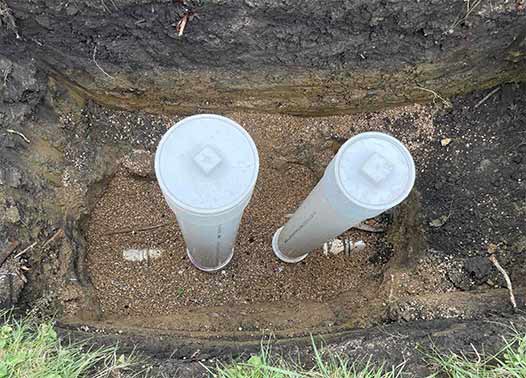
The sewer system is a critical component of any residential or commercial property, responsible for safely carrying wastewater away. Over time, sewer lines may deteriorate or become damaged, leading to issues such as blockages, leaks, or sewage backups. When these problems arise, it becomes essential to undergo sewer line repair. In this article, we will delve into the process of sewer line repair, from initial inspection to the restoration of a well-functioning sewer system.
1. Inspection
The first step in the sewer line repair process is a thorough inspection to assess the condition and extent of the damage. Professional plumbers utilize specialized equipment, such as video sewer line inspection cameras, to diagnose the problem accurately. These cameras are inserted into the sewer pipes, providing real-time footage of the interior, enabling technicians to identify the cause of the issue.
2. Problem Identification
Once the inspection is complete, the plumbers will analyze the footage to determine the specific problem affecting the sewer line. Common issues include tree root intrusion, pipe corrosion, blockages caused by debris or grease buildup, or cracks and breaks in the pipes. Identifying the problem correctly is crucial for prescribing the appropriate repair method.
3. Repair Method Selection
Based on the identified problem, the plumber will select the most suitable repair method. Several commonly used techniques in sewer line repair include:
- Trenchless Pipe Lining: This cutting-edge method involves creating a new pipe within the existing damaged pipe, eliminating the need for extensive excavation. A flexible liner coated with epoxy resin is inserted into the sewer line, inflated, and cured in place to form a durable, corrosion-resistant inner pipe.
- Trenchless Pipe Bursting: In cases where the sewer line is severely damaged, a trenchless pipe bursting method may be utilized. This technique involves breaking apart the old pipe while simultaneously inserting a new one. The bursting head breaks the old pipe, allowing the new pipe to take its place seamlessly.
- Traditional Excavation: In situations where extensive damage or collapsed pipes are present, traditional excavation may be necessary. This method involves carefully digging a trench to access and replace the damaged section of the sewer line.
4. Repair Execution
Once the repair method is selected, the plumbers will proceed with the necessary steps to fix the sewer line damage. If trenchless repair methods are chosen, the process typically involves:
- Cleaning and clearing the sewer line of any obstructions or debris using hydro-jetting or a sewer rodding service.
- Lining the damaged pipe or bursting it and replacing it with a new one, as per the chosen repair technique.
- Inspecting the completed repair to ensure its quality and proper functioning.
In the case of traditional excavation, the steps may include:
- Excavating and exposing the damaged section of the sewer line.
- Replacing the damaged pipe with a new one.
- Inspecting the completed repair and backfilling the trench.
5. Restoration
Once the repair is finalized, the final stage involves the restoration of the property to its original state, ensuring a smooth transition from the repair process. The restoration may include:
- Filling the excavation trench and compacting the soil to its natural state.
- Replanting any displaced vegetation or landscaping.
- Repairing any hardscapes or structures, such as driveways or walkways, that were affected during the repair process.
Conclusion
Sewer line repair is a complex process that requires professional expertise and specialized equipment to ensure long-lasting solutions. From the initial inspection to the final restoration, each step plays a crucial role in restoring the proper functionality of the sewer system. By understanding the process outlined in this article, property owners can better navigate and appreciate the importance of sewer line repair in maintaining the overall integrity of their plumbing systems.


